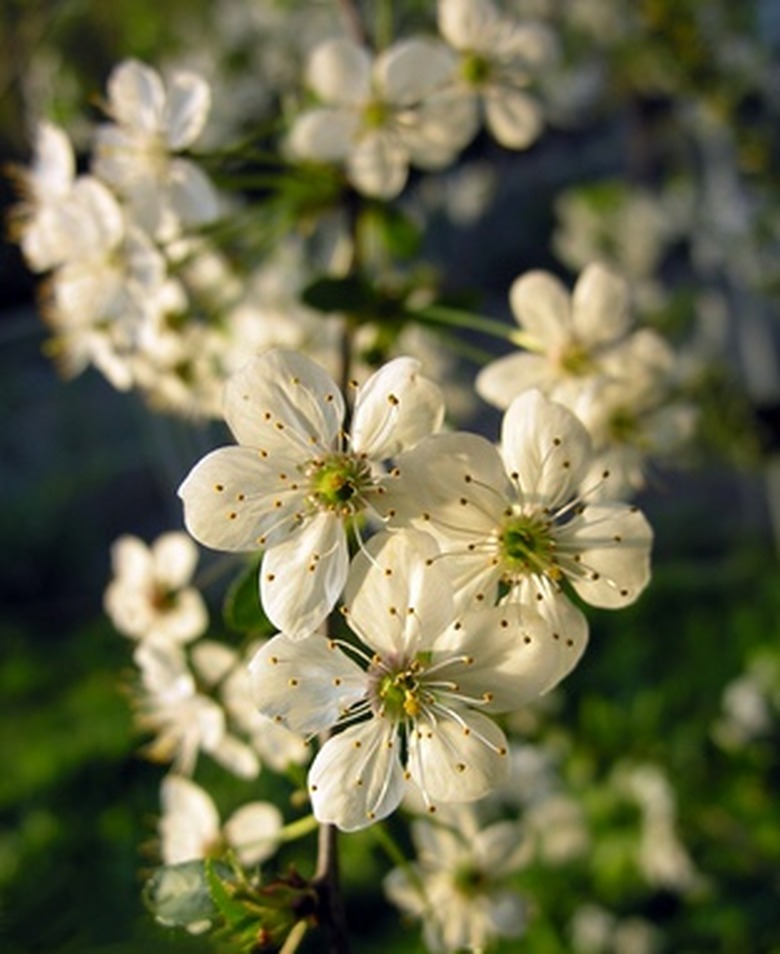How Big Do Flowering Plum Trees Get?
The purple flowering plum is a deciduous tree that creates an attractive focal point in the home landscape. The flowering plum grows best in U.S. Department of Agriculture growing zones 5 through 9, where it is produces an upright form. Flowering plum trees are attractive to birds and wildlife once the fruit appears in mid to late summer.
Characteristics
A purple flowering plum tree is a fast-growing tree variety that reaches a height of 15 to 25 feet. The tree crown takes a round shape and reaches a width of 15 to 25 feet at the largest point. Flowering plum trees produce purple leaf foliage and a fragrant, white or pink colored flowers in spring. The flower blossoms turn into small purple fruit during the summer growing season.
- The purple flowering plum is a deciduous tree that creates an attractive focal point in the home landscape.
- Flowering plum trees are attractive to birds and wildlife once the fruit appears in mid to late summer.
Planting Location
Plant the flowering plum tree in an area that receives full sunlight and has no overhead wires or obstructions so the tree is able to reach a full height potential. Flowering plums grow best in a well-draining loam soil with an acidic pH of 4.5 to 7.5. Amend the soil with ground rock sulfur to lower the pH prior to planting to create an optimal soil for tree growth and foliage color. Work organic compost into the planting hole to increase the water draining properties in sandy or clay soils.
How to Plant
Proper planting of a purple flowering plum tree ensures a good start for tree growth and height. Set the tree in a hole that is two to three times wider than the root ball and the same depth. Make sure the top of the root ball remains at ground level. Add organic compost and a phosphorous fertilizer to the removed soil to stimulate root establishment and the start of tree growth. Water the tree well after planting and for the first two months of growth to prevent stress that limits growth.
- Plant the flowering plum tree in an area that receives full sunlight and has no overhead wires or obstructions so the tree is able to reach a full height potential.
- Amend the soil with ground rock sulfur to lower the pH prior to planting to create an optimal soil for tree growth and foliage color.
Care and Maintenance
Provide supplemental water to the flowering plum once a week during the growing season when the rainfall is less than 1 inch. Soak the soak with a drip irrigation system to make sure the water remains available for the root system. Make a tree drip irrigator by drilling a hole into the bottom of a 5-gallon bucket and placing the water-filled bucket under the tree. Apply 3 to 4 inches of organic mulch over the root ball area of the flowering plum to assist with moisture retention and limit weed growth that competes with moisture. Fertilize the flowering plum once a year in spring with a balanced tree fertilizer to promote growth and maintain tree health.
Problems
Monitor the flowering plum for problems with wood boring insects or aphids. Wood boring insects form tunnels under the tree bark, which creates deep, damaging grooves that may limit tree growth and height if not treated. Apply a tree insecticide to the trunk and branches to eliminate a wood boring insect problem. Aphids infest flowering plum trees by sticking to the leaves and leaving a residue. The insect does not damage the tree, but are a nuisance. Treat an aphid problem by spraying the foliage with water to remove the insects.
- Provide supplemental water to the flowering plum once a week during the growing season when the rainfall is less than 1 inch.
- Apply 3 to 4 inches of organic mulch over the root ball area of the flowering plum to assist with moisture retention and limit weed growth that competes with moisture.
